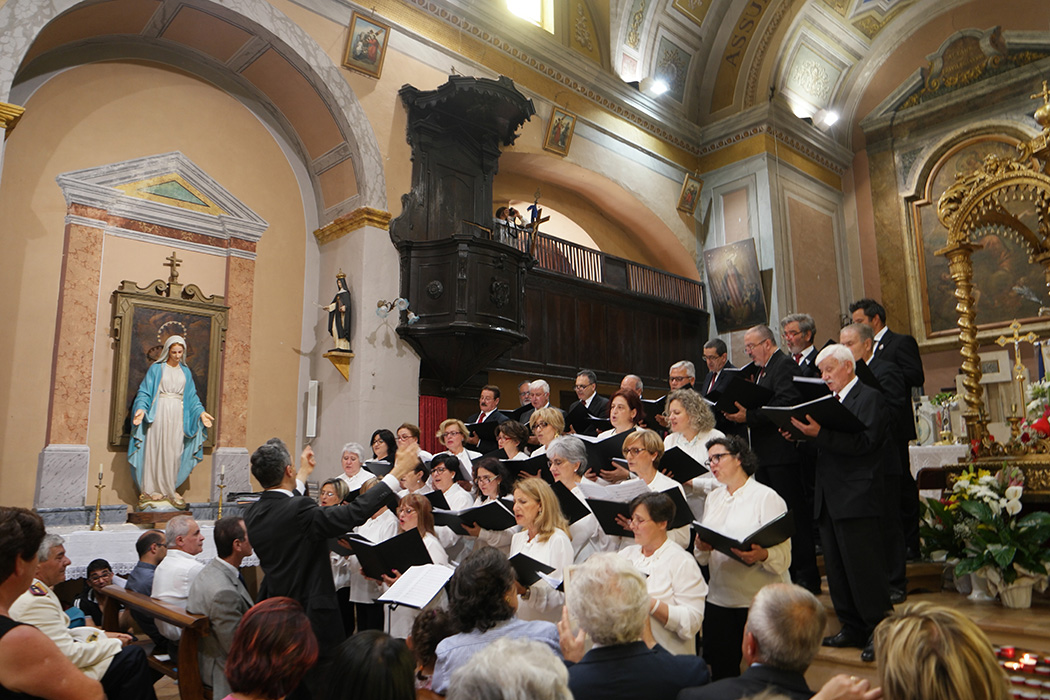Sant'Oliva (Saint Oliva) is one of the saints who were chosen as patrons for the many miraculous works they have accomplished: the latter in the Second World War.
She is the patron saint of Trivigliano, Castro dei Volsci, Pontecorvo and Cori. But she is also greatly revered at Legowo in Poland, near Gdansk for a strange legend.
History tells of Prince Stanislao falling from a horse in a forest, wounded and asking for help by playing a horn. A lady arrived with an olive branch and told him to become a Christian. Stanislaus converted and shortly there came a monk who saved him and baptized him. The prince then built a large convent dedicated to Santa Oliva.
After a few years, the faithful felt the need for a stronger bond with the saint and in 1703 the Polish Friars asked for a relic of the saint from the Bishop of Anagni, who immediately granted a piece of her arm.
The worship of S Saint Oliva spread throughout Pomerania until 1830, when the geography of that part of Europe changed completely with the birth of Prussia.
The relics then disappeared and the traces of the cult and power of Saint Oliva were lost, and it remained only in the hearts of some faithful, until Fabrizio Drago from Trivigliano arrived in Poland and discovered the church dedicated to the same patron of his town.
In 2012, there were exchanges of letters between the bishop of Gdansk and that of Anagni and a new relic of the arm of Saint Oliva was dispatched to Gdansk where since 2013 it is celebrated every year with great rites. Her honour was celebrated with the composition of a musical hymn by Luigi Brandi - conductor of the Anagni Poliphonic Chorus - with the words Ivo Roweder that had been written for the previous hymn in 1700.
Today Trivigliano is twinned with Legowo.
Oliva was born in Anagni and died on June 3, 492 after spending much of her life in a monastery where she had many visions. Anagni is a sacred city since the time of the Ernici and it is famous for being the city of 4 popes (Innocent III, Alexander IV, Gregory IX and Boniface VIII) and 6 saints (Saint Magno, St. Peter, Santa Secondina, Santa Aurelia, Santa Neomisia and, Santa Oliva). Its history is read in an epigraph of 1133 of Anacletus's antipope and his body is in the cathedral.
The first news of the church of Trivigliano dates back to 1295 and the original church is in a crypt under the Church of Santa Maria Assunta.
At Trivigliano the cult is still very much alive and celebrated with a double procession, on the evening of 10 June the arm of Sant'Oliva is brought through the historic town centre and around the hilltop in a charming procession with torches along the small streets.
The next morning, then, the solemn procession takes place with the statue mounted on a special pedestal carried by the members of the brotherhood. The processions are marked by music played by Trivigliano's band.
Moreover, the power of Saint Oliva continues and there is an incredible anecdote from the Second World War. Pontecorvo was on the German Army's Gustav defence line, which was heavily bombarded by the allied army. For some reason, none of the bombs struck the town and the only one that fell in the centre did not explode.
After the war, the American soldier who had dropped the bombs on Pontecorvo found himself passing through the town and was brought into the church.
When he passed the portrait of Sant'Oliva he remained petrified and began to cry. He said that as he launched the bombs a lady stretched out her cloak to protect the city and all the bombs bounced and hit other targets:
"That lady had the face of the portrait of Sant'Oliva of Pontecorvo cathedral!"
Perhaps precisely for this adversity to the war, Sant'Oliva is always represented with a dove and a twig of olive, as in the stories of the great flood.
One last curiosity: Sant'Oliva is also worshiped in Charlottesville (USA) by the descendants of Ciociarian emigrants!








Follow us